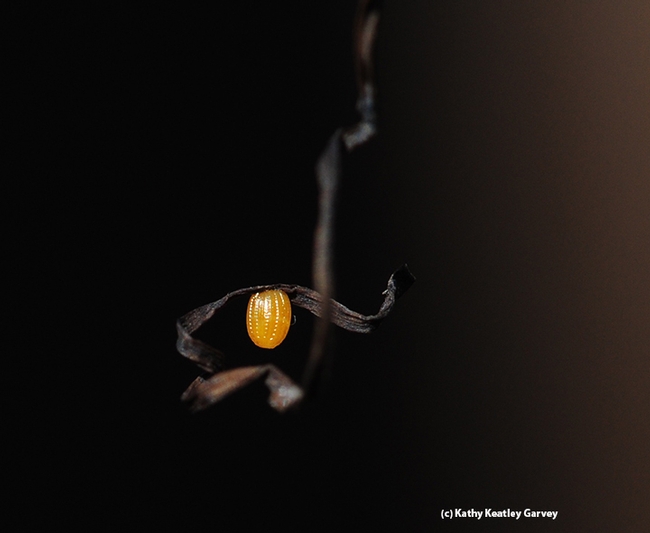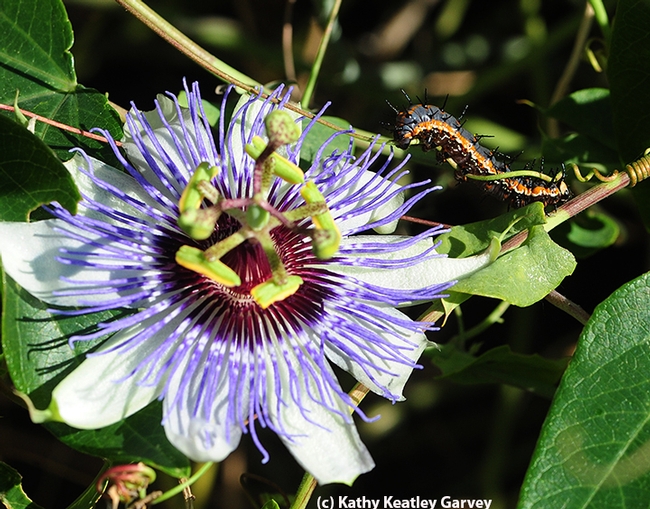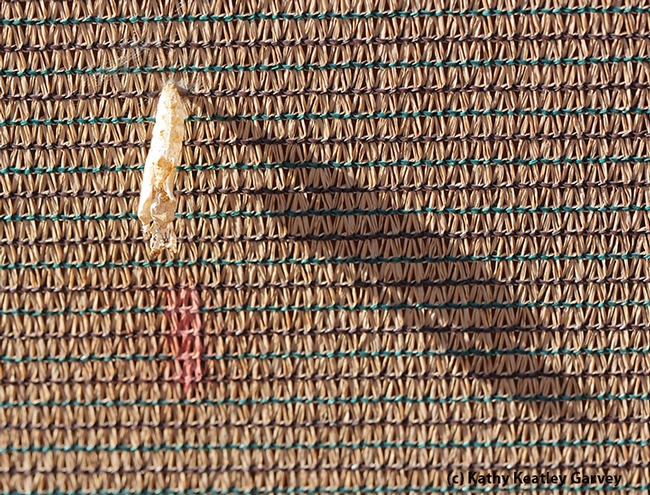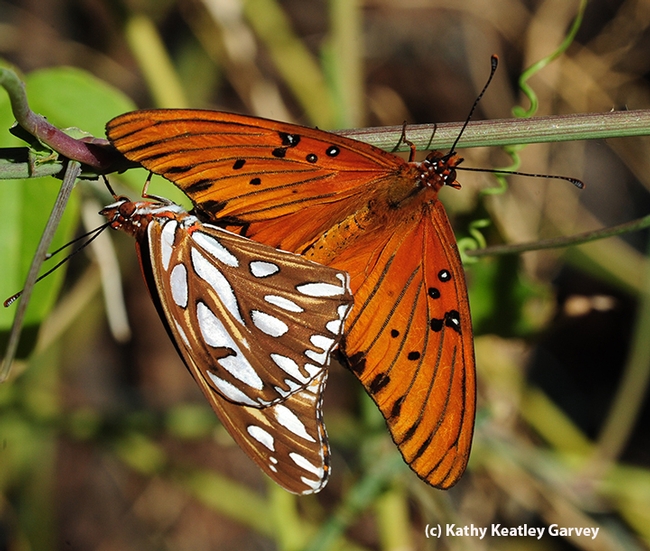If you look closely, you'll not only see the cycle of life in your garden, but art as the center of life.
Take the Gulf Fritillaries. They're a stunning orangish-reddish butterfly (Agraulis vanillae) with silver-spangled underwings. It's a delight seeing them laying eggs on their host plant, Passiflora (passionflower vine), watching an egg develop into caterpillar, a caterpillar form a chrysalis, and an adult eclosing.
If the light is just right, the tiny yellow egg, about the size of a period at the end of this sentence, glows. Then see,,,
- A caterpillar inching along on a passionflower vine
- An empty chrysalis or pupal case hanging like a broken chandelier.
- A male and female becoming one
Butterfly expert Art Shapiro, distinguished professor of evolution and ecology at the University of California, Davis, says this is a good year for Guld Frits. He has studied the butterflies of central California for more than four decades. Check out his research website, Art's Butterfly World.
Shapiro says the Gulf Fritillary is a long-time resident of California. It was first documented in Southern California in 1870s. "It first appeared in the vicinity of San Diego in the 1870s,” he says. “It spread through Southern California in urban settings and was first recorded in the Bay Area about 1908. It became a persistent breeding resident in the East and South Bay in the 1950s and has been there since.”
Shapiro says it “apparently bred in the Sacramento area and possibly in Davis in the 1960s, becoming extinct in the early 1970s, then recolonizing again throughout the area since 2000.”
Thank goodness for Gulf Frits!
Attached Images:

The tiny yellow egg of a Gulf Fritillary glows in the early morning sun. (Photo by Kathy Keatley Garvey)

A Gulf Fritillary caterpillar inches away from a passionflower. (Photo by Kathy Keatley Garvey)

The empty chrysalis of a Gulf Fritillary hangs like a broken chandelier. (Photo by Kathy Keatley Garvey)

Gulf Fritillaries, aka passion butterflies, mating in the passionflower vine. (Photo by Kathy Keatley Garvey)